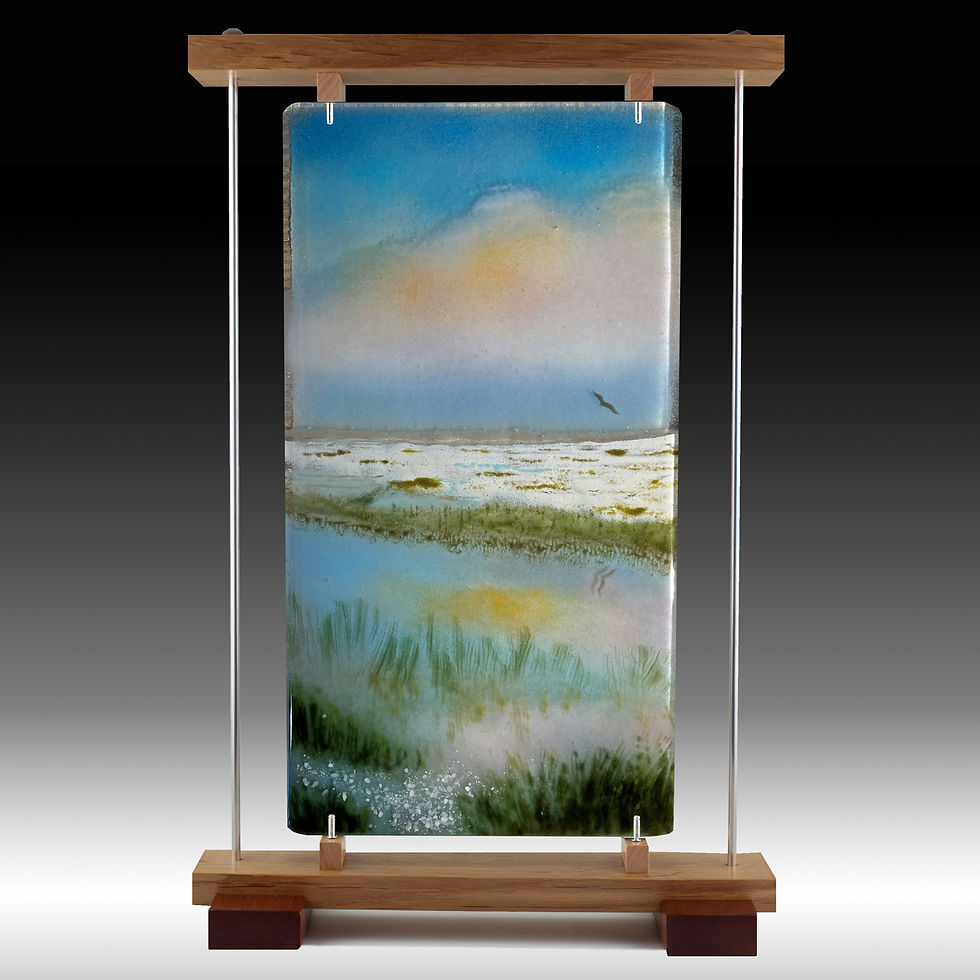Outside the Lines
new work that refuses the constraints of imagination
Outside the Lines
new work that refuses the constraints of imagination
The contemporary artists at ViVO are emerging from their studios and are ready to share their objectified responses to the pandemic. The resulting paintings, sculpture, mixed media, mosaic and kiln glass in this show capture the depth of the experience that we are all sharing while inspiring new hope for a future alive and well and living in our hearts.
The contemporary artists at ViVO are emerging from their studios and are ready to share their objectified responses to the pandemic. The resulting paintings, sculpture, mixed media, mosaic and kiln glass in this show capture the depth of the experience that we are all sharing while inspiring new hope for a future alive and well and living in our hearts.

Shadows and texture. Transparency and fluidity. Color and light. These are the qualities of kiln-fired glass that inspire Barrie Brown's art. more about the artist
kiln glass landscapes Barrie Brown

Using sheets of clear and finely crushed colored glass, she develops intimate landscapes and fires them at high temperatures in a kiln. Kiln-fired glass provides for limitless exploration, combined with the uncertainty of the heat to create magical floating images. A background in watercolor painting inspired her approach. She uses dozens of colors of powdered glass, carefully sifting color upon color to create her complex images. With this technique, she develops art pieces filled with multifaceted, layered images and shimmering light.
Shadows and texture. Transparency and fluidity. Color and light. These are the qualities of kiln-fired glass that inspire Barrie Brown's art.
This is a 5 minute video demonstrating some of the unique techniques
Barrie Brown uses for creating glass landscapes.
To create her art glass panels, Brown uses a painterly technique to develop the images, though each panel is made entirely of glass; there is no paint involved. She starts with clear or lightly colored transparent flat sheet glass made specifically for use in a kiln. She creates each panel from four or five separate layers of sheet glass, building the composition one layer upon the other, often working on both sides of a sheet of glass, thus composing some of the images in reverse. The images are created using very finely crushed glass that is similar in consistency to talcum powder. This powdered glass comes in a wide variety of kiln-tested colors, but many of the powders do not display their true colors until they are fully fired, and even then many continue to take on different hues or opacity as they go through subsequent kiln firings.
She uses a variety of techniques to compose or “paint” the powdered glass images on the flat sheet glass, including various sifting tools, paint brushes, lithographer’s tools, stencils, and sometimes just her fingers. She fires each layer separately at least once, then begins to build the final panel using multiple additional firings with temperatures ranging from 1350 to 1500 degrees. Each piece requires from 8 to 12 separate kiln firings and around 200 to 300 hours in the kiln. The panel is then framed using beautiful hardwoods, aluminum and steel. The frames are designed to capture the perfect amount of light, and most can either be placed on a pedestal or other flat surface or hung on the wall, by removing the hardwood “feet.”








